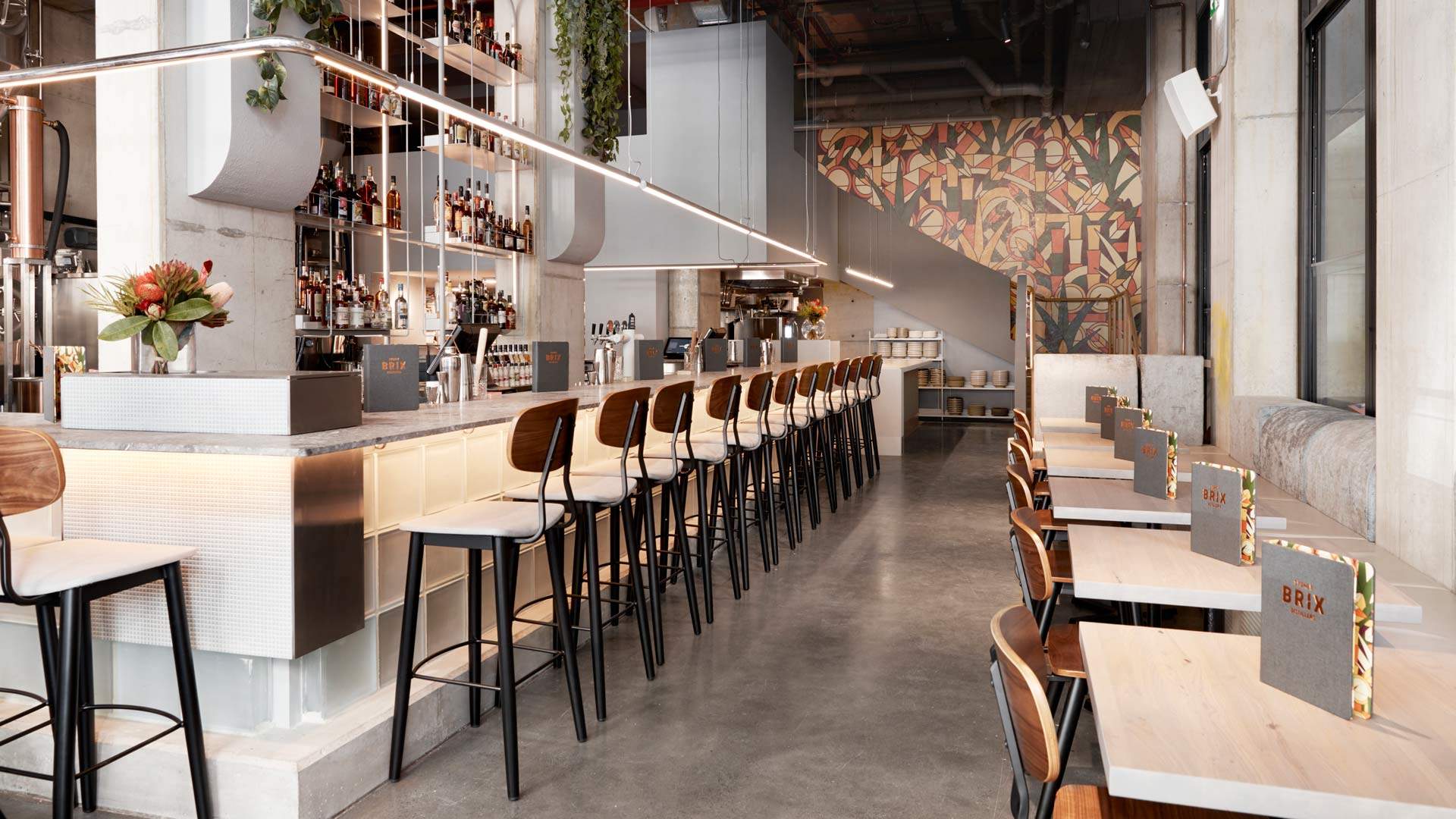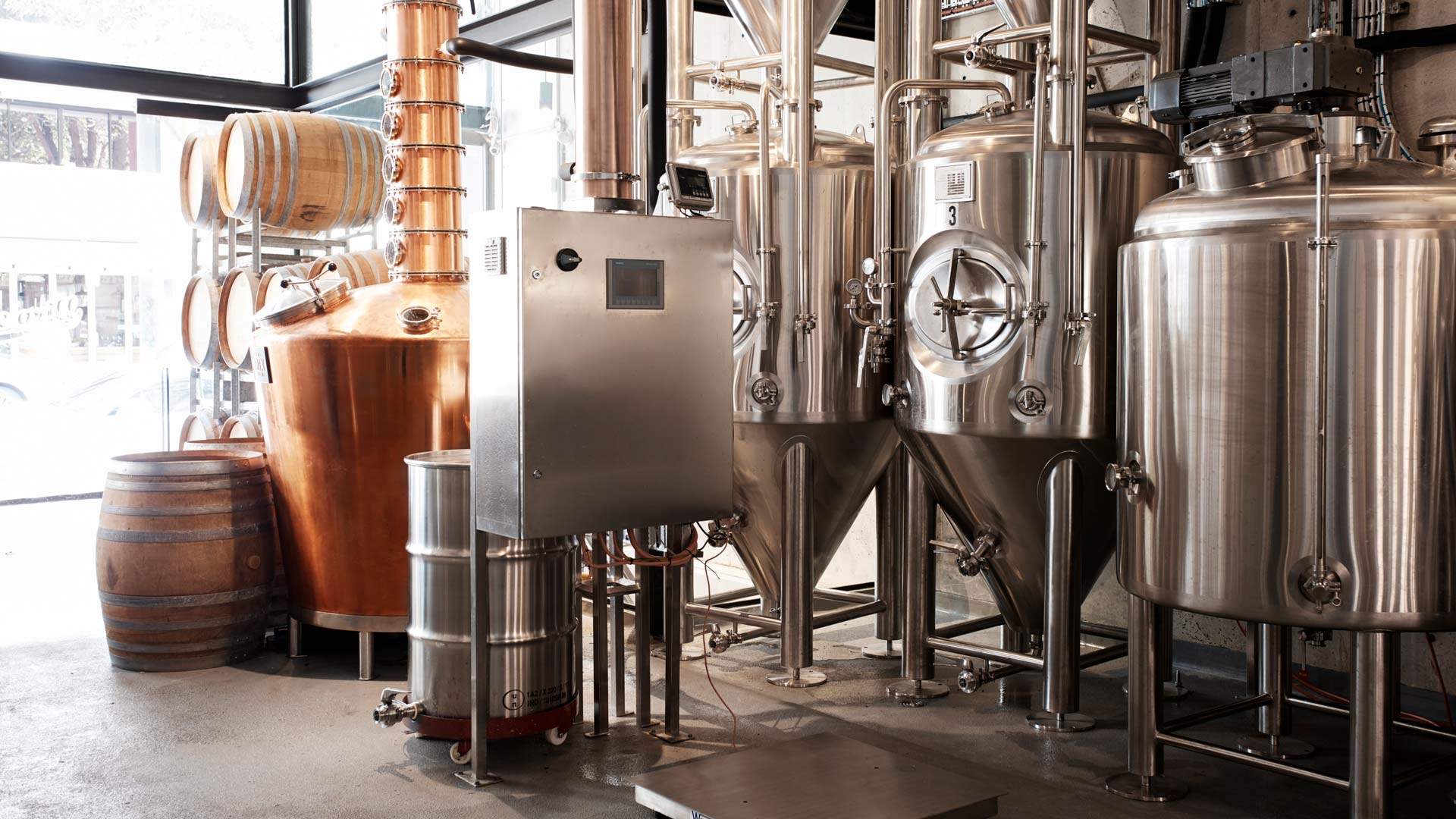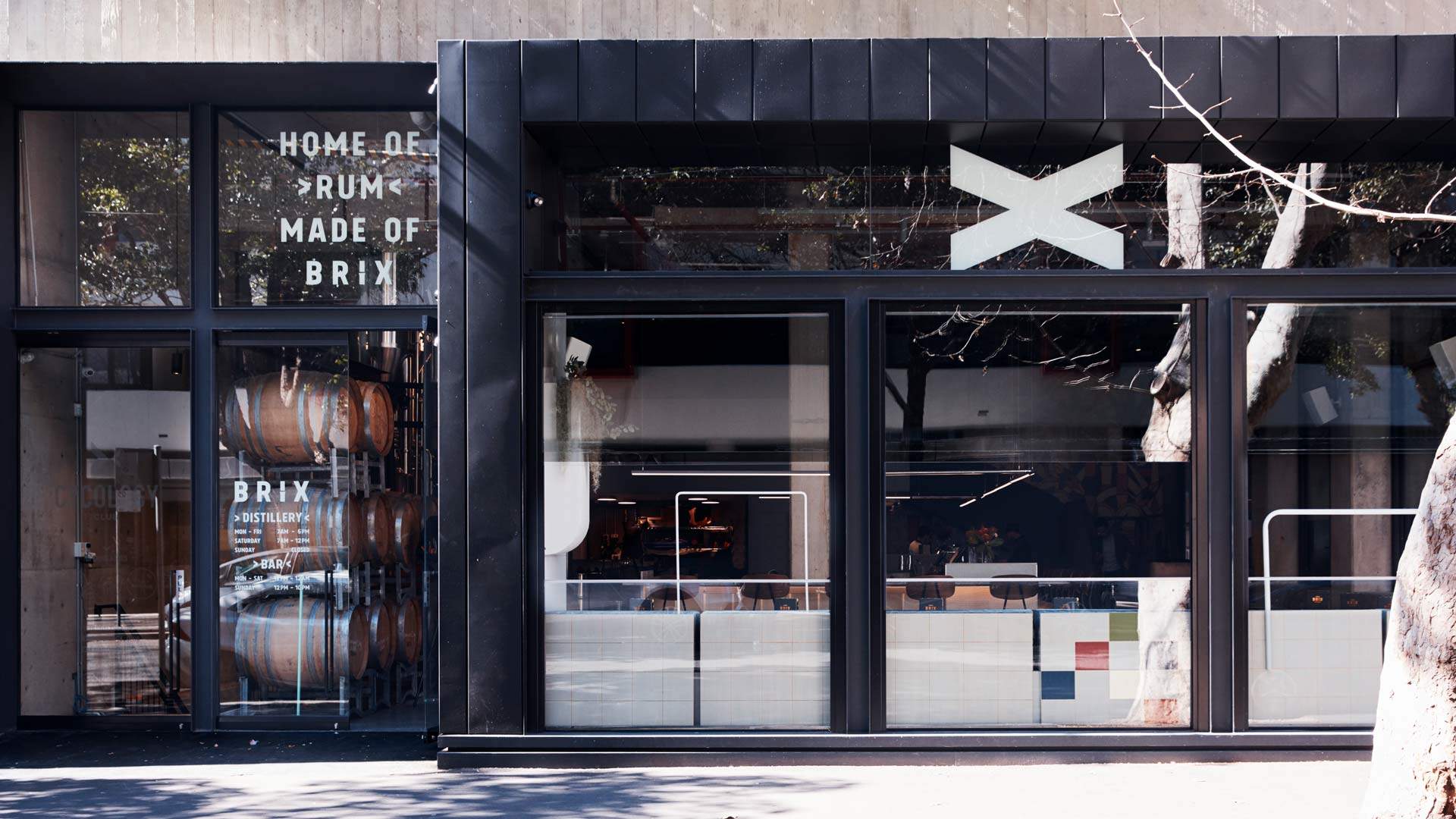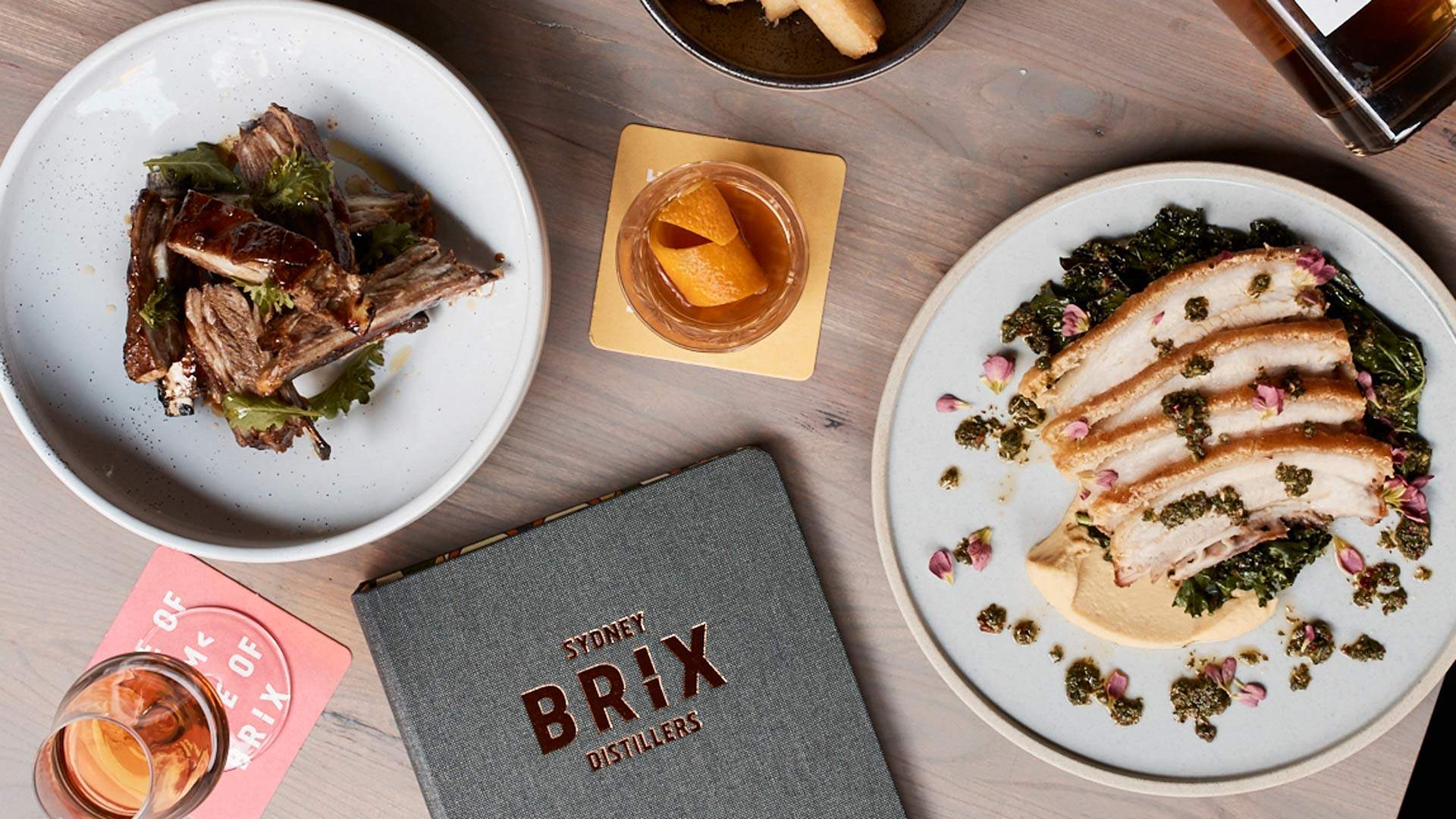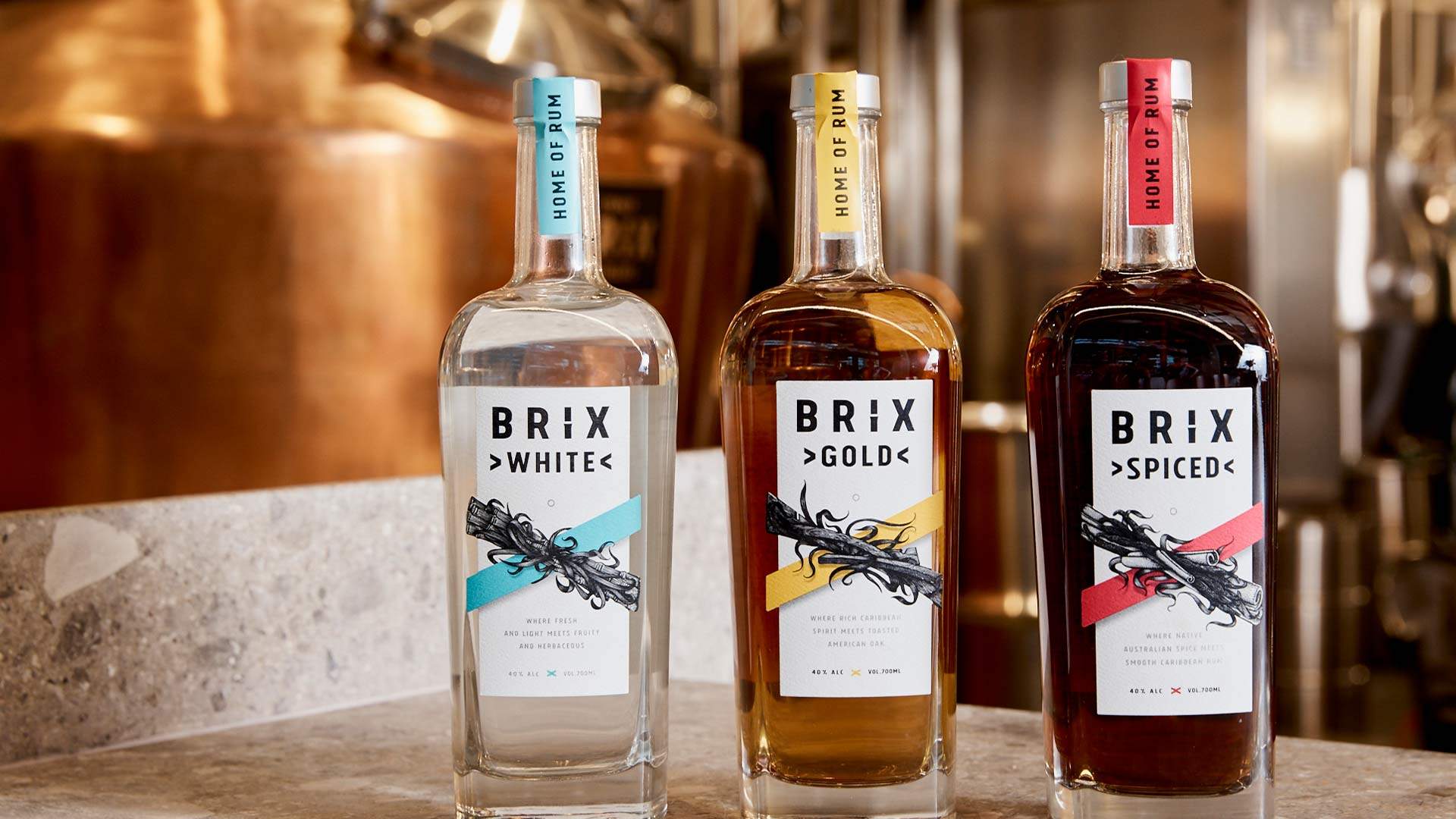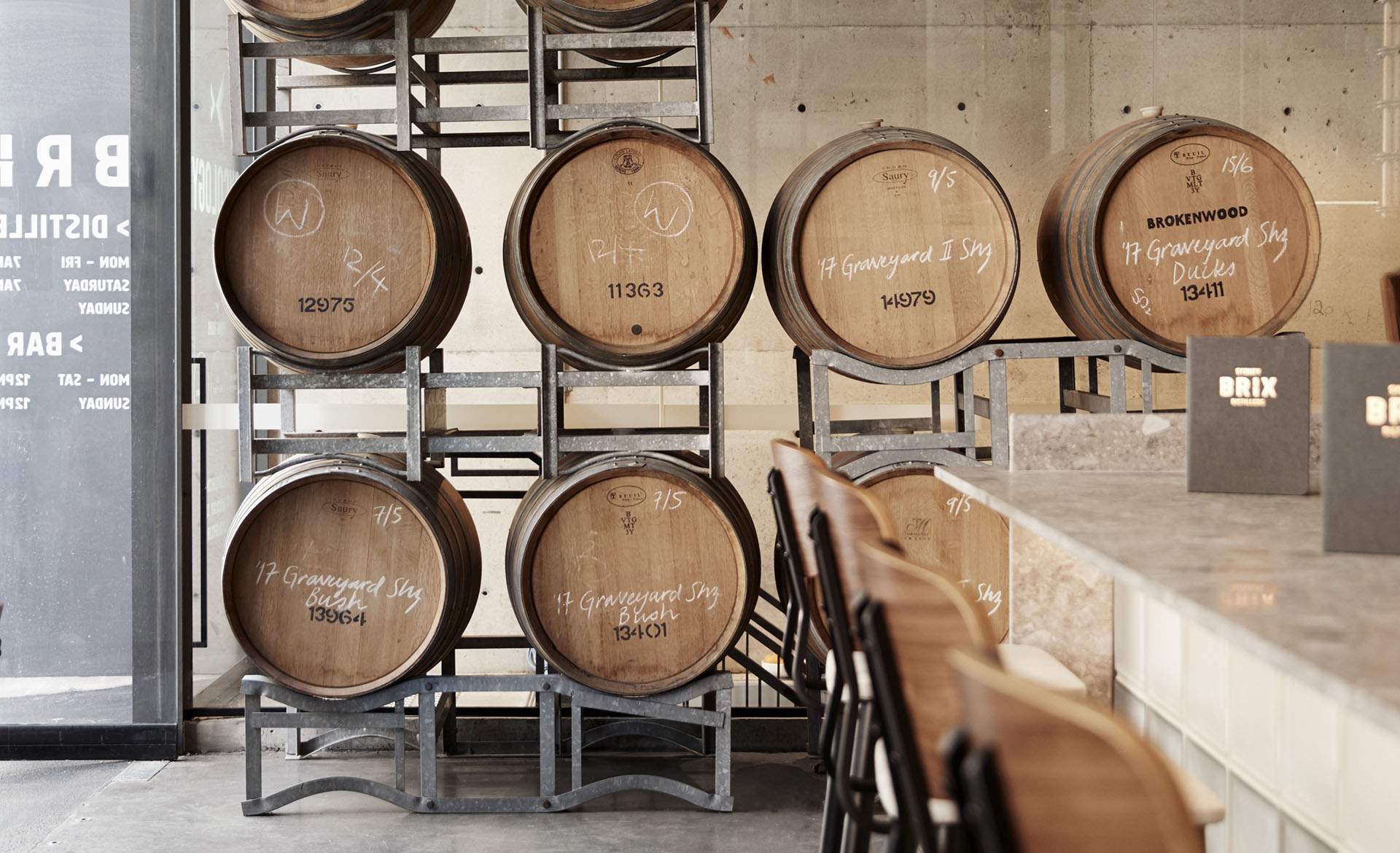Brix Distillers
A craft rum distillery, bottle shop and bar in Surry Hills.
Overview
It's no secret that few things get us as excited as food and booze. But one place in particular is getting us really, really excited: Brix. Located in Surry Hills, the distillery and bar not only serves booze — it makes it on-site. And it's the first craft distillery dedicated to rum in Sydney's inner city in a long time.
Rum? Yes, rum. It used to be distilled at the old Pyrmont CSR factory from the 30s till the 80s, but — apart from a limited release batch of Archie Rose virgin cane spirit — isn't something that's made widely made locally. We're all pretty up to speed and pumped about locally distilled gin, thanks to the likes of (the game-changing and continually impressive) Archie Rose Distillery and Poor Toms, but rum, generally speaking, is yet to infiltrate our collective craft spirit radar.
Brix is a working distillery, shop, barrelling room and bar. The three passionate guys behind the whole thing are James Christopher, Damien Barrow and Siddharth Soin, and they're justifiably enthused about seeing their vision — which has been over three years in the making — come to life. The co-founders are old friends (and are also partners in Cammeray's popular local restaurant Public) and together they want to change the people's attitude to rum.
Part of their job is to educate the public about the diversity of the spirit, which runs from a clear rum in a mojito to a syrupy spiced rum. The venue features a fully working distillery with an Australian-made 1200-litre still, which is overseen by head distiller Shane Casey (previously at Archie Rose). The team has launched with a core range of rums: Brix White, Gold and Spiced, which are, for now, only available at the Surry Hills distillery.
As well as its own haul, Brix has a 'rum wall' with over 150 varieties from around the world, and a selection of Australian wines, local spirits and craft beer also available. A cocktail list, designed by bar manager Doug Laming, includes rum heavy-favourites, such as mojitos, piña coladas and daiquiris, and more inventive creations like the Bitter & Twisted, with grapefruit-infused rum and Antica, and the Pash the Distiller, with rhubarb bitters, tepache and Brix Gold.
If you're keen to dive deeper in rum (not literally, we don't recommend jumping into the still) order one of the seven rum flights available at the bar — or hail the rum trolley. Roaming the bar every night on the hour, it gives guests a chance to sample different rums and chat to the in-house 'rum guru'.
The grand space, which has been designed by interior design firm Amber Road, includes an intimate mezzanine barrelling room, overlooking the still, and an open kitchen with counter dining and banquette seating fitting 70 people on the ground level. It features lots of greys with copper details and wall art by local street artist Nico Nicoson.
Brix isn't a restaurant, but food is still a central part of the distillery and bar. A compact menu, designed by Ivan Sanchez — who previously worked at Bodega and Porteño — features South American-inflected dishes, such as crisp tostadas topped with ceviche and pink grapefruit, pickled tongue with capers, jerk pork belly and a lineup of arepas (stuffed corn flatbreads).
As for the name, 'brix' is a measurement of sugar in a liquid and is actually part of the rum making process. "At some point the distiller has to measure the brix of the liquid he's about to throw yeast into," Christopher explains.
So what is the rum making process, in short? "Rum is made from sugar cane juice or molasses that is fermented, then yeast is added to produce alcohol. "It's then boiled at a temperature below boiling water, which makes the alcohol evaporate, leaving water behind, the alcohol goes into the column of the still as a gas, which is re-condensed, turning back into the clear liquid," he says. It can then be aged, spiced, mixed and blended at the hand of a distiller, and as Barrow says, "it's science up to a certain point, when it comes out of the still, and then it's an art — that's when the craft element comes in".
And if you skimmed over all the sciencey part of that explanation, fear not — things will make a lot more sense at the distillery.
Images: Dave Wheeler
